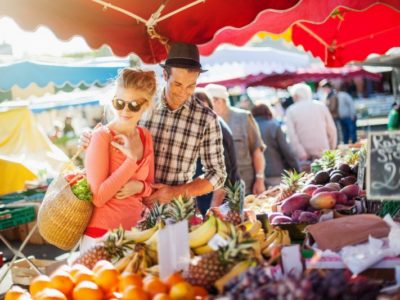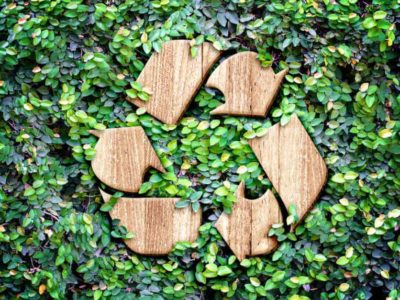Is it high time for you to support local foods only? Why and how should you practice locavorism? Learn more about it here!
RELATED: 10 Advantages Of Buying Local
In this article:
- What Does It Mean to Eat Local?
- Start a Garden!
- Fish Your Next Dish
- Hunting for Game
- Foraging Wild Produce
- Visiting a Farmers’ Market
Being a Locavore: Eating Local Foods for Overall Wellness
What Does It Mean to Eat Local?
Every year, technology makes our world even more borderless, seamless, and small. Cultures meld, cargo planes fly, cuisines are hybridized, and tropical delicacies become staples in northern villages.
But, the convenience of January mangoes grown in Peru and massed-produced mochi shipped from Japan all come at a cost.
Our predilection for far-flung foodstuffs is one of the most wasteful parts of modern life. Despite their charm, it is largely detrimental to our health.
In response, recent years have seen the rapid growth of a movement that prizes local food production.
Locavorism is the commitment to a diet composed of as many foods from one’s own bioregion as possible or local sourcing of foods. To be a true locavore, you need to find a route to reconnect with the forests, fields, and waters that sustain us.
In doing so, you become a steward of our chosen swath of local landscape.
Further, being a locavore has its own local economic benefits. By being a conscious consumer, you help open up opportunities for local food retailers and help develop a local food system your community can fully support.
Purchasing local produce, as well as other agricultural products, within your area helps local producers earn better. It also assists local governments to reduce wastage from cargo and shipments of fresh fruits and vegetables.
No matter your wealth or your location, there are ways you can join the locavore movement today.
Start a Garden!
Not too long ago, 80% of humans labored in food production. The global industrial and information revolutions have changed that in just two centuries.
Nowadays, farming is a largely mechanized process that constitutes only ~2% of jobs in the United States. Yet the instincts and satisfaction of working with plants is still in our blood and fulfills a spiritual yearning as well as the obvious dietary benefits of cultivating fresh, organic, vital food.
If you live on acreage where there is room for a garden, it is easy to get started. You just need:
- A few tools
- Some organic mulch or compost
- A little wire fencing
- A lot of sunlight
Add in the seeds or cuttings of your favorite vegetables, fruits, and roots, and two weeks of labor can turn into years of satisfaction.
Cultivating your own garden will give you fresh agricultural products and pesticide-free fruits and vegetables. Now that’s great for your health!
For most city dwellers, the real benefit of growing food is found in the sun, the camaraderie, and the renaturing a multiplying network of community gardens provide.
In NYC, 596 Acres has helped to transform dozens of disused lots into thriving micro-farms. Usually, community gardens open registration for new stakeholders around early March before commencing planting around the spring equinox.
A quick search should reveal the one nearest to you and from there, you can either contact the manager digitally or go see it for yourself. And if your neighborhood is bereft of the options, it might be time to ring up a few friends and start one — that’s how prosperity begins.
RELATED: Want To Create Your Own Indoor Garden? Here’s A Step-By-Step Guide
Fish Your Next Dish
For at least 40,000 years, humans have been fishers.
Though industrial fishing methods have done major damage to fish stocks in oceans worldwide, and effluents has made much of the life surrounding urban or industrial centers unsafe to eat, travel 50 miles in the right direction from any given point and you are likely to find water that is both clean and rich in aquatic life.
Learning to fish is a great way to build friendships, practice patience, deepen understanding of natural cycles of life, death, and predation, and secure a non-industrial source of protein. It’s also a great past time for fathers and sons, grandfathers and grandchildren, or friends with the same passion for fishing.
You can fish in the sea, on a lake, and even in rivers.
Remember to take home only how much you need for you or your family’s meal. Or you can give some of your catch to your neighbors, close friends, or family members.
If you have the resources and possess the patience needed or if you’re near acceptable areas, try fishing!
Hunting for Game
The most direct way to connect with your bioregional ecology is to venture out of the streets and the fields and into the wild, where there is a thriving, conservation-minded world of hunters, trappers, and foragers who use their knowledge of the landscape to derive much of their diet.
The act of hunting is primal, brutal, and not for everyone. But before you dismiss it as immoral, consider this: the animals you hunt have always been subject to predation and live lives infinitely more natural and right than the billions of animals raised for their meat on feedlots worldwide.
Since the expansion of human habitation has come with the dramatic reduction in predator populations, animals like the white-tailed deer and common rabbit have multiplied in a way that damages ecologies worldwide.
By playing the role of predator, not only is the hunter or trapper connecting with one of the essential human activities and adding a uniquely rich input to her diet: he/she is also doing a service to the wild landscapes of her region.
Foraging Wild Produce
Foraging has become more popular as people realize the nutritional and medical bounty hidden in the brush. Even in city parks, plants, and mushrooms are growing that have major health benefits.
If you live near the woods, try spending some time around it to look for possible wild plants you can add to your pantry and spice cabinet. Going with your kids or friends can also become an excursion. Just make sure you won’t get lost or encounter an accident.
Remember, be cautious when foraging and do not consume anything you pick without first consulting with an expert. If the will is there, a day poking around the right parts of the woods will yield medicines, herbs, spices, and edibles that can be a great supplement to your diet.
Visiting a Farmers’ Market
If you can’t start your own garden or hunt your own food, then you can simply visit the farmers’ market in your area. Some areas have one every week, while others are open for the entire week.
Farmers’ markets offer locally produced foods. This means the fruits and vegetables you’re purchasing all come from in or around your area. You’re not only practicing locavorism, but you’ll also be helping the local economy.
If you want meat, look for locally reared and raised grass-fed beef or free-range chicken meat. Even if you can’t raise or catch your own meat, you’ll still be sure you get the best nutrition with locally grown produce.
There are many ways to practice being a locavore and avoid a food shortage. If you’re in areas with an abundance of resources, then it’s easier to look for food to eat.
Consumption of fresh produce straight from the source also helps stabilize gut health and improve overall wellness.
If you have the time, energy, and knowledge in food and agriculture to produce your own meals, then be a full-on locavore. If not, then you can still patronize and support local businesses.
More importantly, you don’t have to pay hundreds of dollars as you would with imported food products!
You May Also Like…
Editor’s Note: This post was originally published on February 23, 2018, and has been updated for quality and relevancy.




